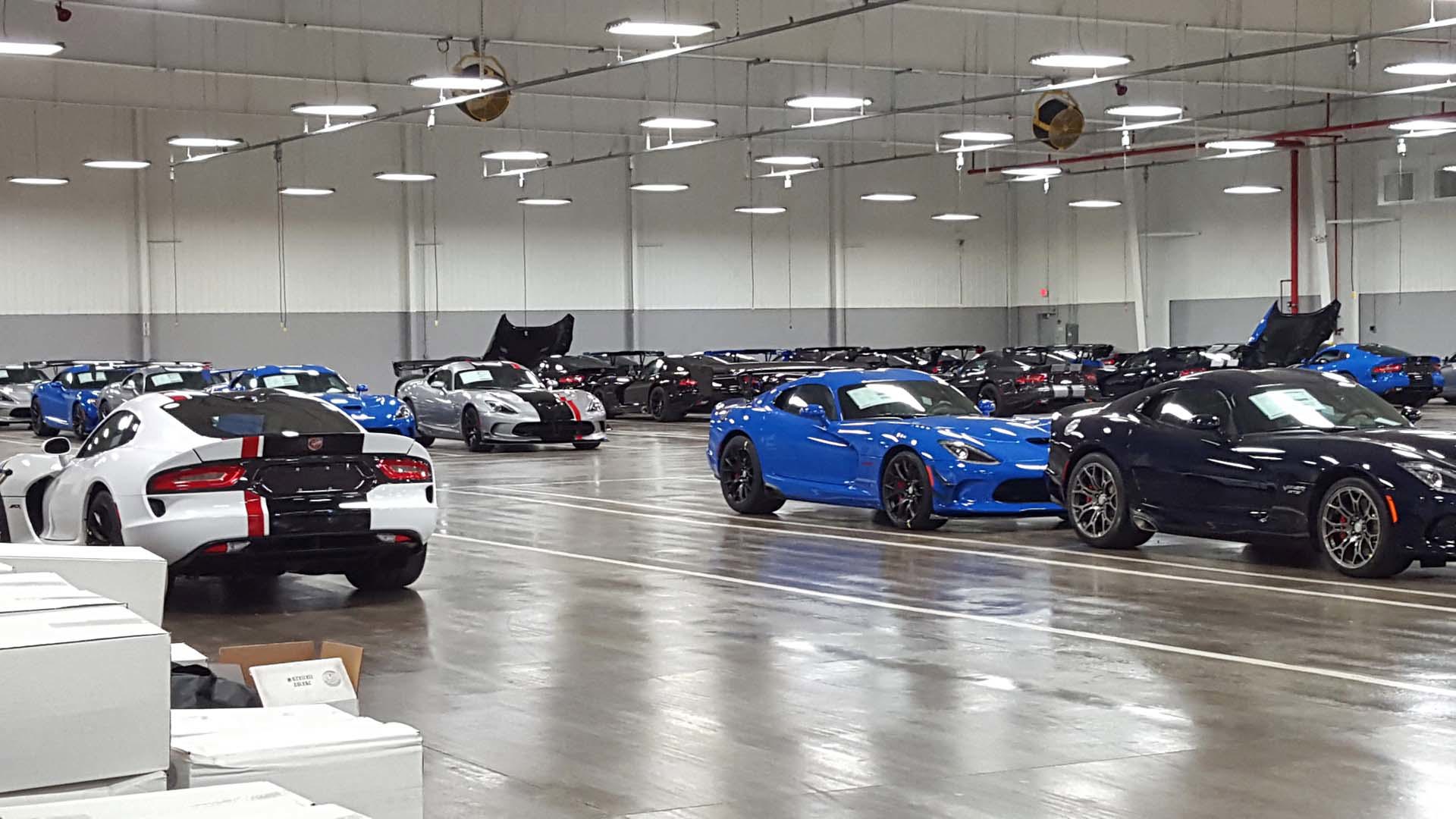by Justin Pritchard
The Dodge Viper: a V10 powered American lung-squisher with 640 horsepower; a storied history of primitive and low-tech charm; crushing performance to make thrice-the-price exotics blush in embarrassment.
The Dodge Viper isn’t a car for everyone – but if you want to turn heads, tell fellow motorists that you’re a boss of the highest order, enjoy frightening levels of power output, and don’t want to see four copies of your ride in the parking lot when you go to Home Depot, the way Corvette and 911 owners do, this might be the car for you.
The Dodge Viper is hand-assembled by a small team at a (relatively) small operation beside a residential neighborhood in Detroit, Michigan. The Conner Avenue Assembly facility started life as a spark-plug factory, but it’s been the home of the Dodge Viper for over 20 years.
Let’s take a look inside.
Welcome to Conner Avenue Assembly!
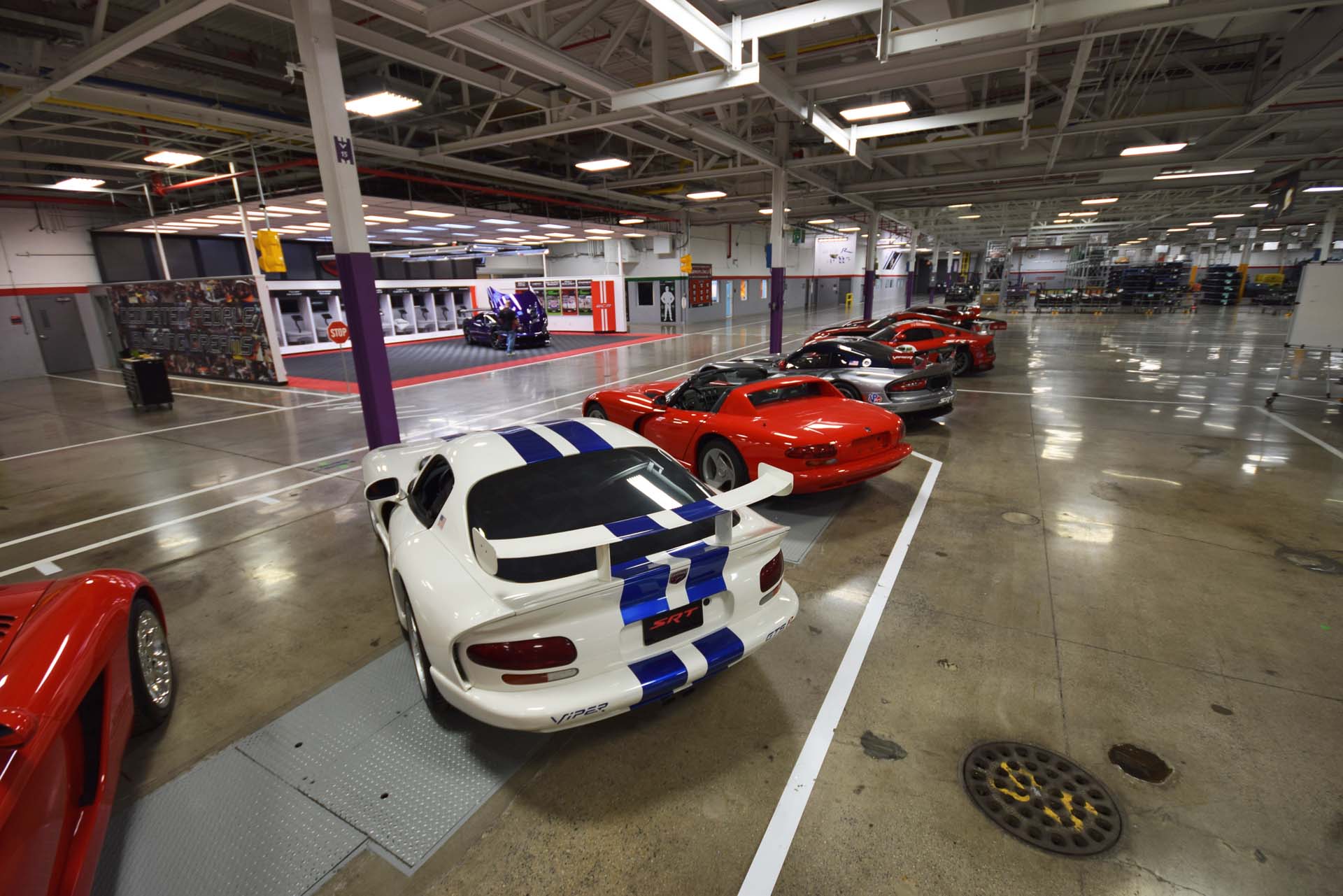
Just inside the front doors and in front of the main assembly area, a selection of retired Dodge Vipers are on perpetual display. Race-cars, concepts and production models are lined up, reminding workers of the storied history of the Viper. They also form a unique centrepiece for visiting owners and customers, reminding them of the model’s heritage. See the purple Viper in the background? That’s the customer pick-up area, where lucky owners are encouraged to take delivery of their new Viper, just across the floor from the selection of retired models.
3 per day
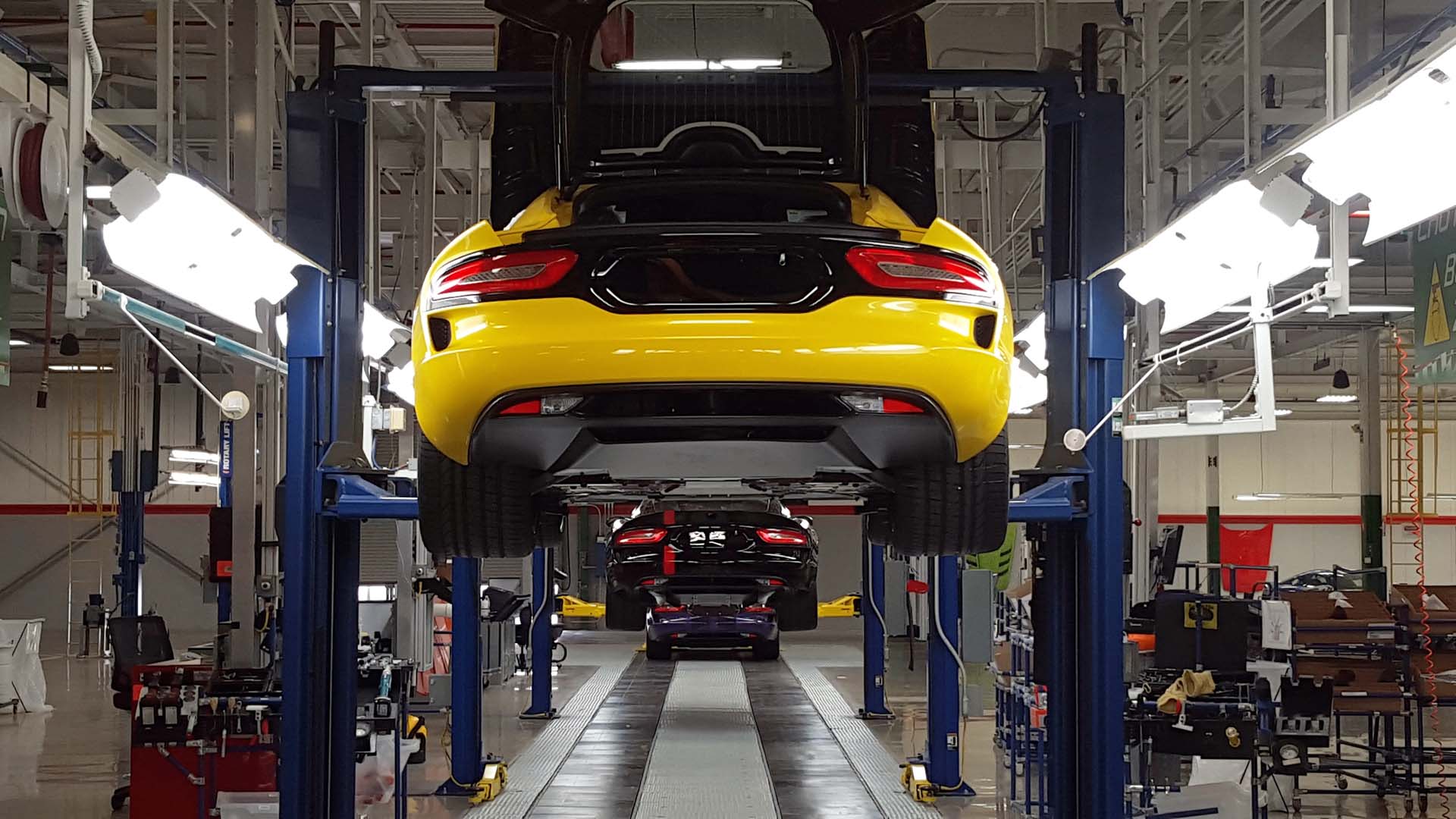
At present, Conner Avenue Assembly is producing just 3 Dodge Vipers per day. In this photo, a full day’s worth of production waits for finishing touches on the assembly line. The plant can build up to 12 cars per day, when required. Each car is hand-assembled and uniquely finished to its owner’s individual tastes.
Hand-built power

Greg Rinehart and Angella Richberg build up the Dodge Viper’s massive 8.4-litre engine block. Rinehart checks and double-checks the torque on bolts in the valvetrain, and Richberg installs the pushrods, which open the valves. The engine blocks are shipped in from a supplier, cleaned and extensively checked for quality and clearances before this two-person team builds them up. At this station, various sensors and housings are also installed. The orange trolley moves the engine down the line when it’s time for the next step.
The Dry Test
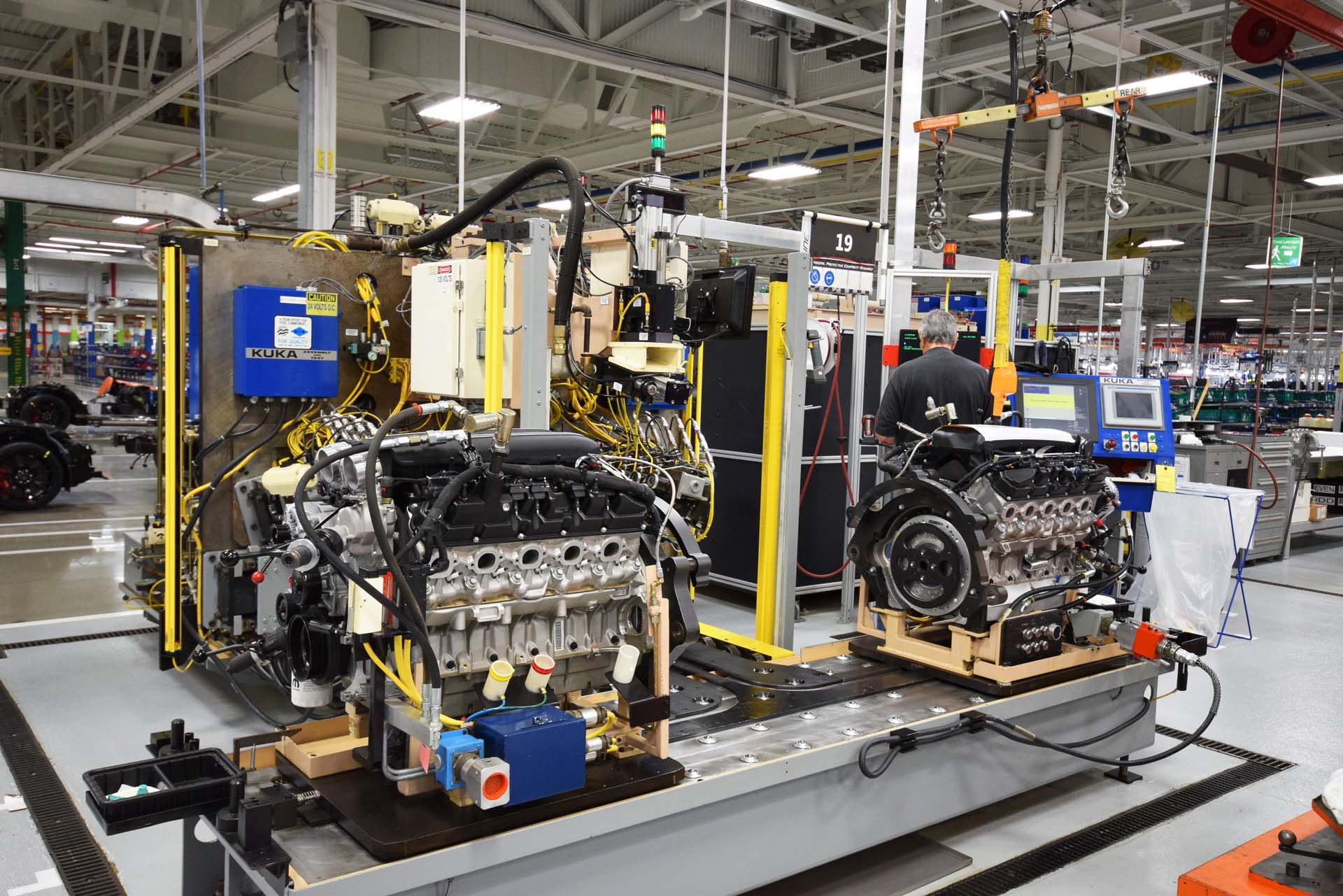
Once the engines are fully built up, this horrifying-looking machine is hooked up, mechanically, hydraulically and electronically to each one. It checks spark plug gap, internal pressures, gasket integrity, electrical systems connectivity, and other tolerances, running nearly 1,000 tests on each engine before it’s installed to the vehicle. The Viper’s engine building team says this machine is extremely fussy when it checks their work to ensure each engine is perfect.
Ingredients for performance
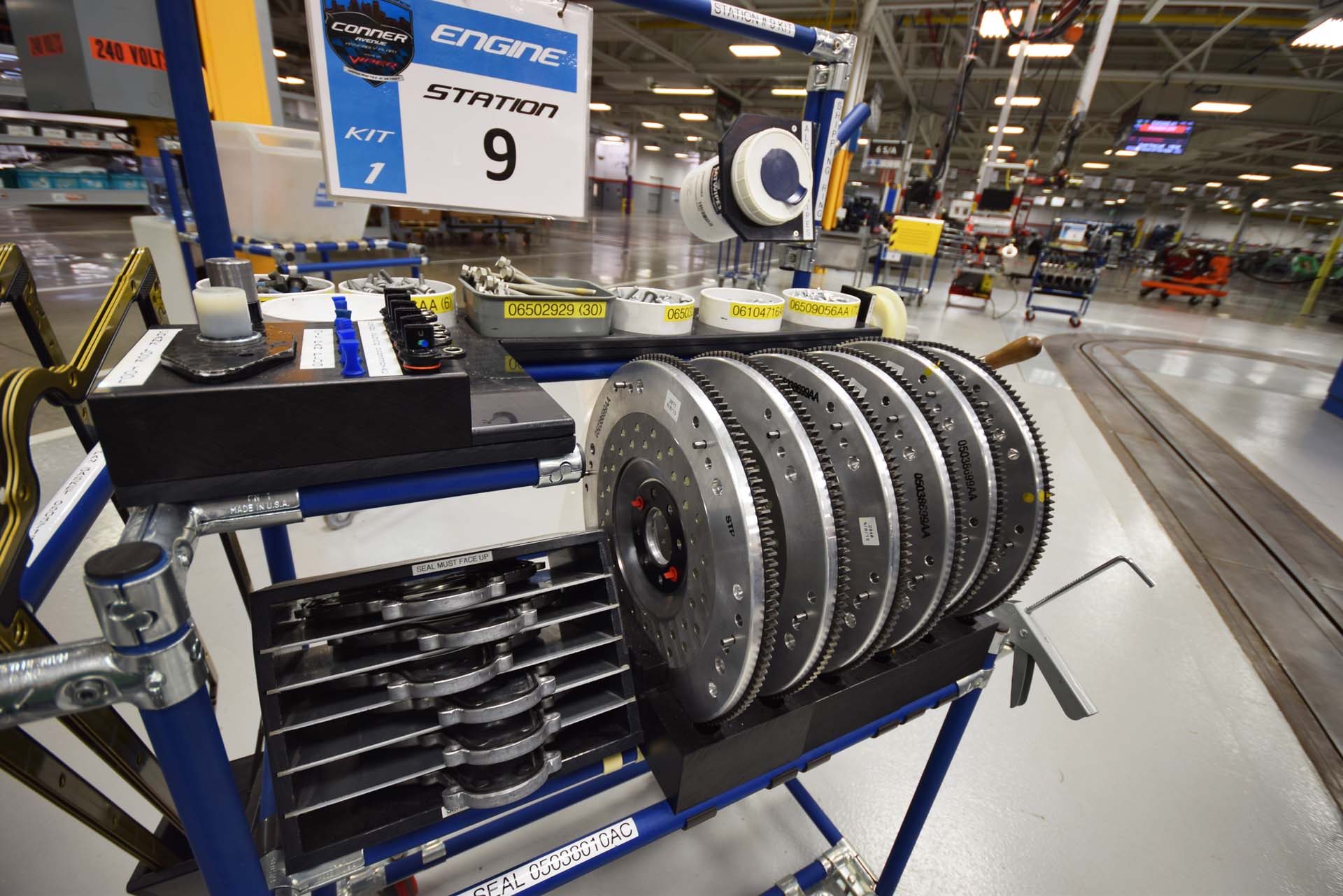
In a restaurant, a chef often uses a cart to gather ingredients from the walk-in fridge for the day’s specials. In Conner Avenue Assembly, workers bring their cart to a giant central parts store, which is sort of like a pantry, to gather the components required for the day’s build. This cart contains flywheels, sensors, special bolts, and other hardware used to build up the Dodge Viper’s driveline. Like the rest of the facility, these carts are clean, organized and tidy.
What’s the diff?
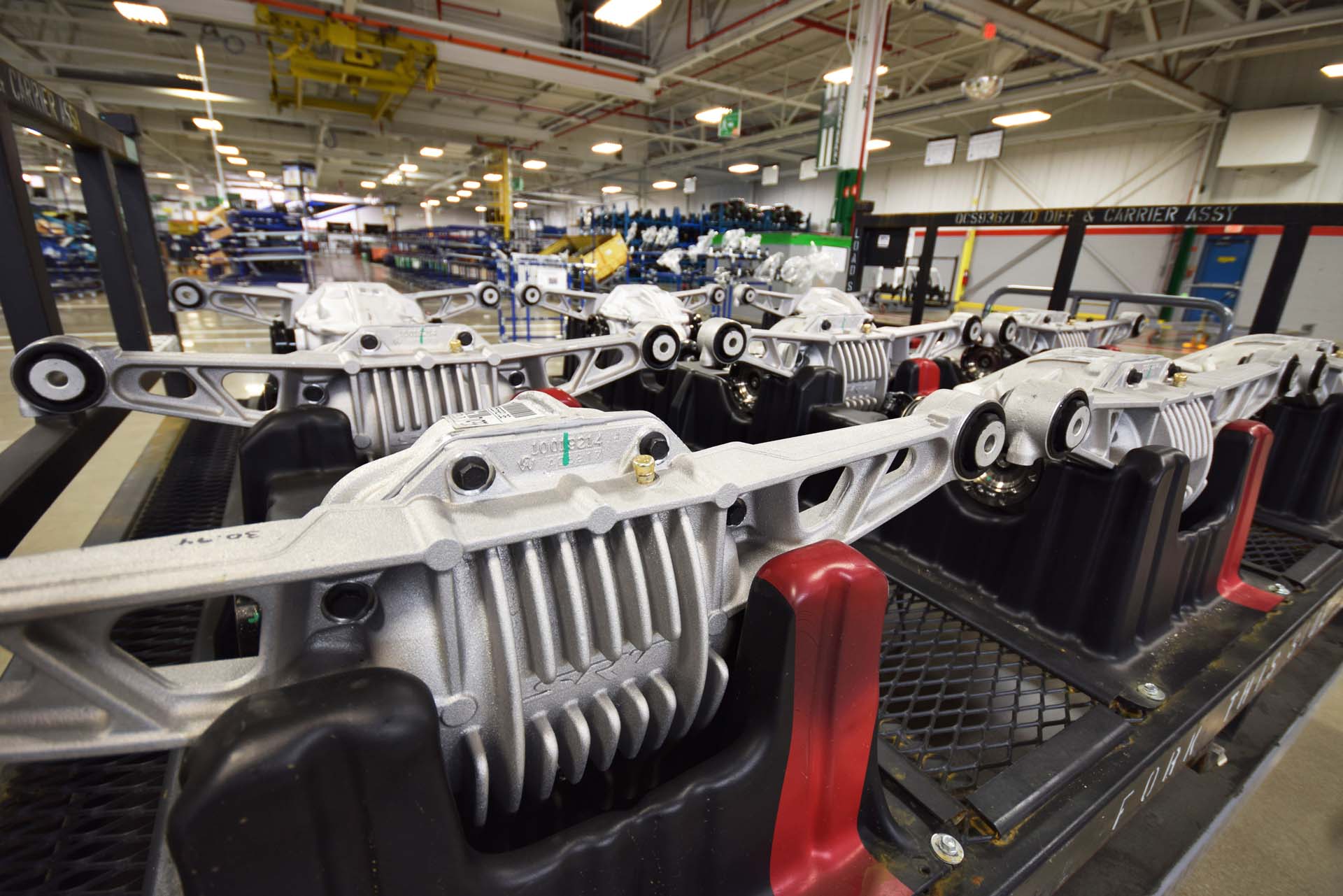
Diffs arrive from a supplier on a trolley. Workers retrieve the differentials they need for the Vipers they’re building in a given day’s shift. The differentials in the front of the trolley have cooling fins cast into their housing, to deal with the extra heat generated by racing use. They’re used in the track-focused Dodge Viper ACR. At the back of the trolley, standard Dodge Viper differentials are lined up. The standard rear differential has no cooling fins.
Wired Up
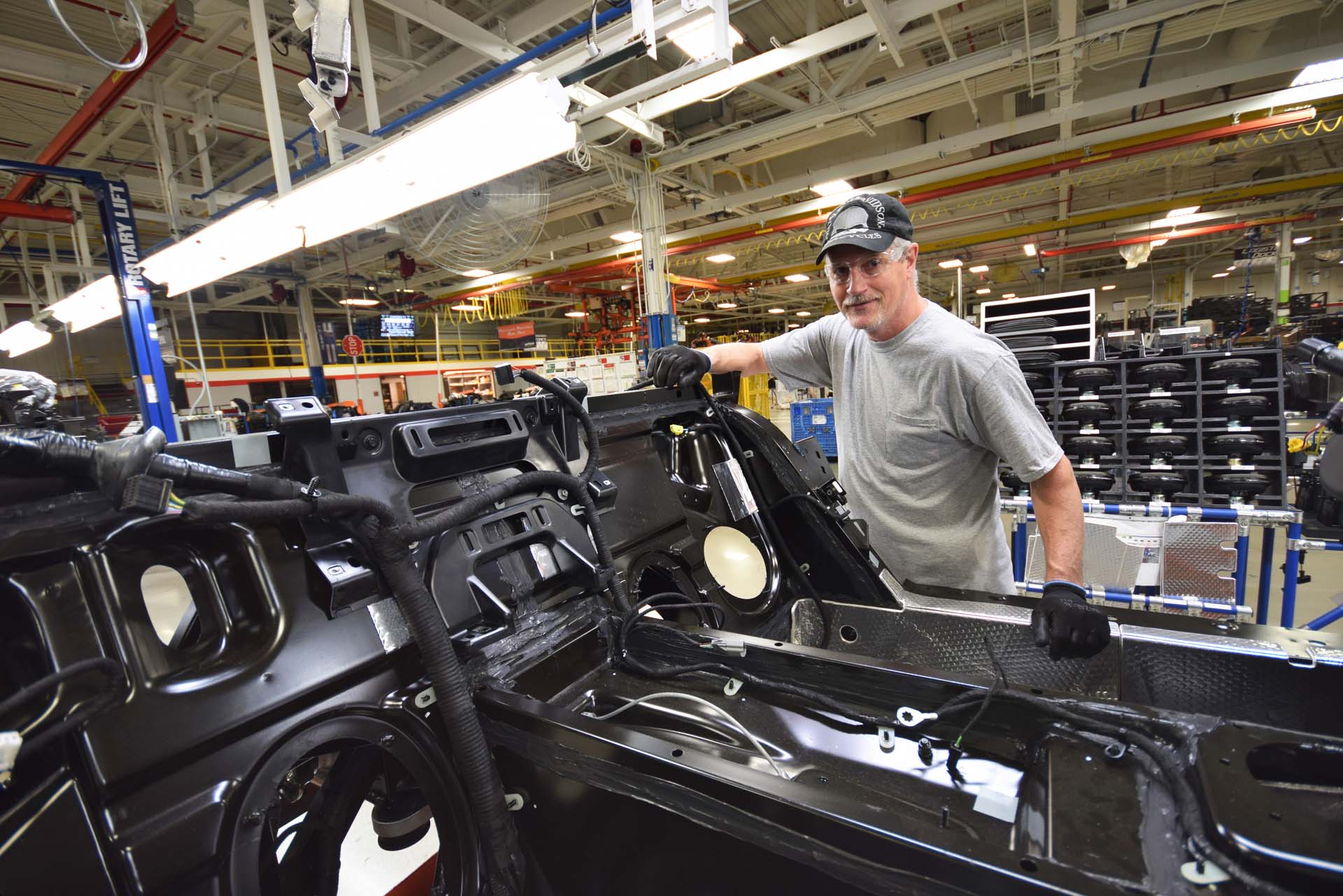
While the driveline is being built across the shop, Darrel Dodds installs a wiring harness to each car’s unfinished body. This key part of the Viper’s nervous system is woven through numerous openings and around many obstacles, and secured in place with special tabs. Later, when the interior is installed, the wiring harness will be obscured and difficult to access – so Dodds triple-checks the harness install to be sure it’s perfect on every car.
Mad Dash
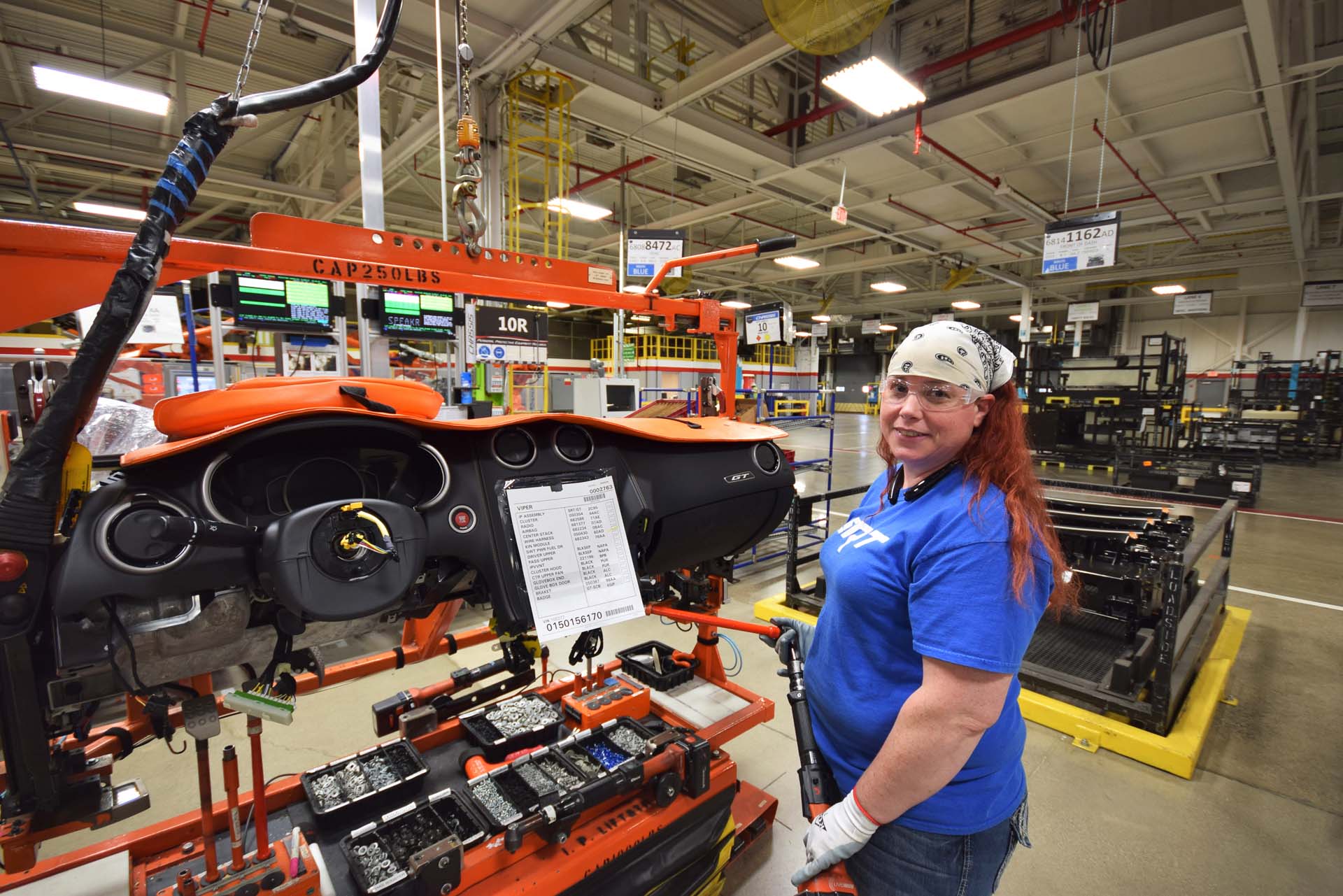
Heidi Lafleur carries the Viper’s front-of-dash assembly over to a rig, locks it in place, and sets off building it up. She’ll install the appropriate pedal-sled, which is the assembly that holds the Viper’s three pedals in place, as well as the proper brake booster for the specific car she’s working on. She’ll also install numerous clips and provisions to which other parts are attached. See the piece of paper taped to the dashboard in front of her? That’s the build-sheet for the car she’s building. It’s sort of like a special-order chit in a restaurant kitchen.
Brake Time!

William Tarte takes this part of his day very seriously. While his colleagues build engines, install wiring and put dashboards together, he installs important chassis parts to completed Viper structures. The carbon ceramic brake rotor on that front hub is an extremely pricey piece, since it’s made of exotic materials designed for racing. Tarte is holding the corresponding brake caliper, which comes from Brembo. In this case, Tarte is building a top-performing Viper ACR, hence the exotic brake rotor and massive caliper. Standard Viper models get a traditional steel rotor.
Wheel Good

With the brakes installed, this worker uses a special tool called a “multi” to fasten all six lug nuts down, precisely and simultaneously for a perfect fit. Later, he’ll ensure the tires are inflated to the proper specifications before the car moves to its next station.
Together at last
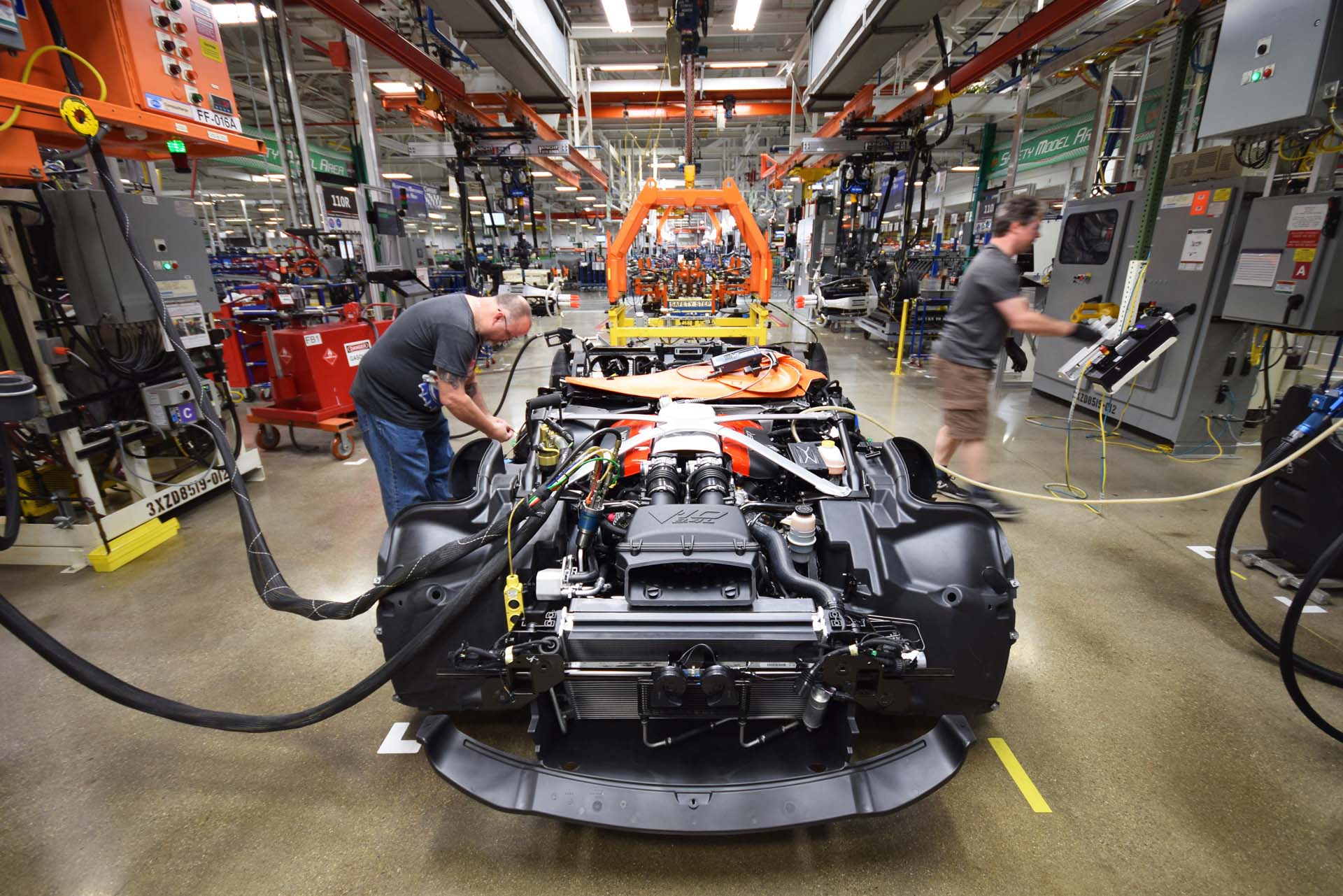
Now, the chassis and driveline are completed, the wheels are installed, and the wiring is hooked up. At this station, Thomas Ballard and his partner begin to bring the Dodge Viper to life, filling it with fluids, adding fuel, activating the computer network, and charging the AC system. The brakes are also filled with fluid, bled, and filled again, until they’re perfect. Now, the Viper is a functioning car, and just needs a body and interior. But there’s an important step in between.
The Live Test

That’s Thomas Ballard again. Now, he’s driven the body-less Viper onto a special dyno roller, and special equipment is hooked up to monitor hundreds of streams of information. He starts the Viper’s engine, and runs it hard on the dyno, confirming emissions compliance, power output levels, sensor readings and much more. At this point, the car is being brought to life, and a Viper has been born. A special horn sounds throughout the factory at the start of each live test, to celebrate the occasion.
Body prep
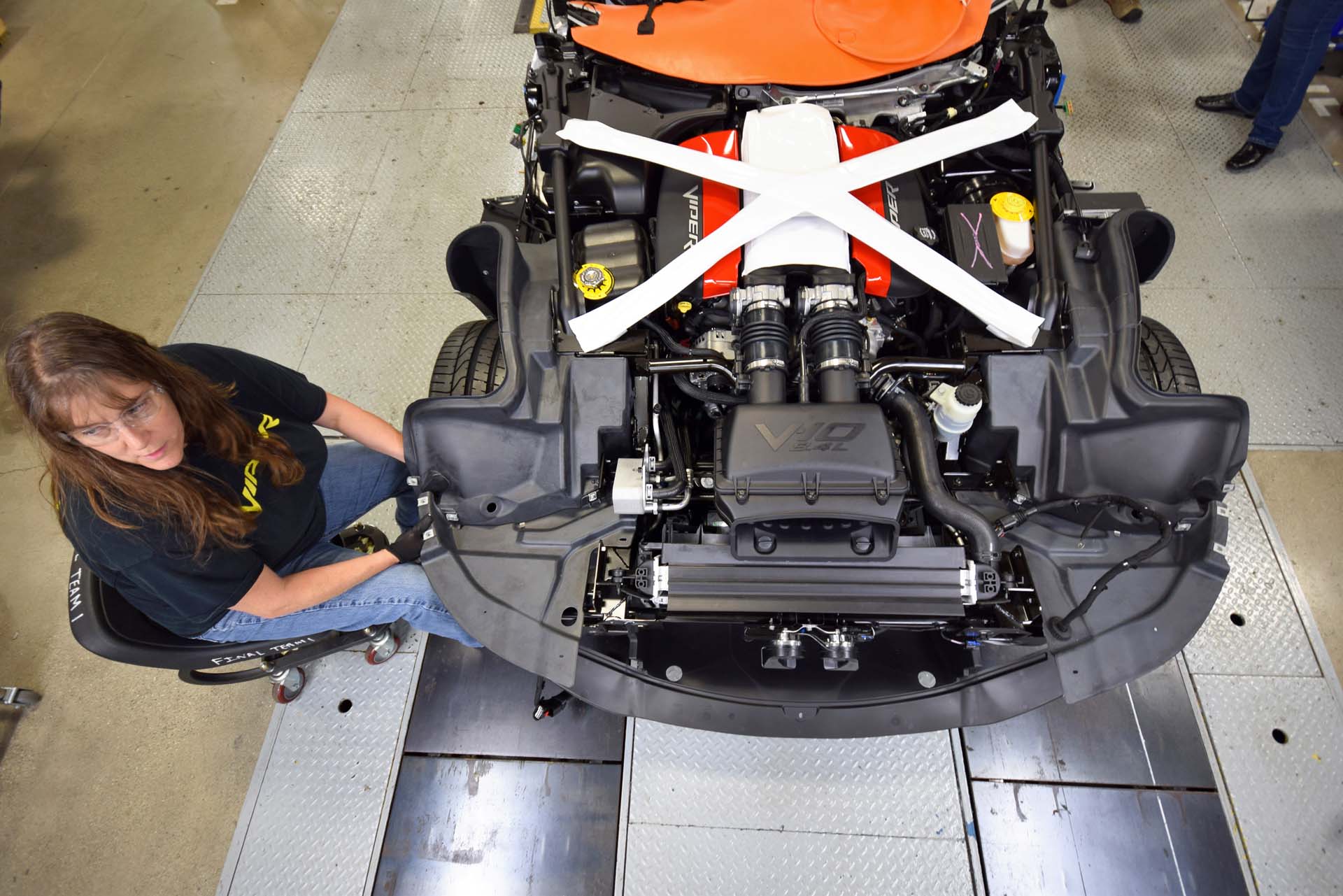
Once the Viper has been brought to life and validated, it heads over to Jill Braunschneider, who preps the Viper for the second part of its journey to completion. She installs special clips and other provisions to hold the Viper’s body, as well as close-out panels and other implements, to the completed frame structure. She wheels around the car in a roller-chair, installing dozens and dozens of small pieces of hardware to the incomplete car.
Panels on

Anthony “Smooth” Thomas fits and fastens one of the Viper’s numerous body panels. Each piece is test-fitted for precision before being locked into place. Thomas and other colleagues in the body-fitting line keep a special wax crayon in their pocket, circling and marking any imperfections they notice on close-up inspection of the panels they install. That’s because the panels are built and painted off-site.
Whoops!

Anthony Thomas spotted a flaw. Circled with his wax crayon is a small imperfection in the lightweight sticker-badge on the front of this customer’s new Viper ACR. No matter how small, pride in their work means Viper’s creators do things right – including having this sticker removed and replaced.
Finishing Touches
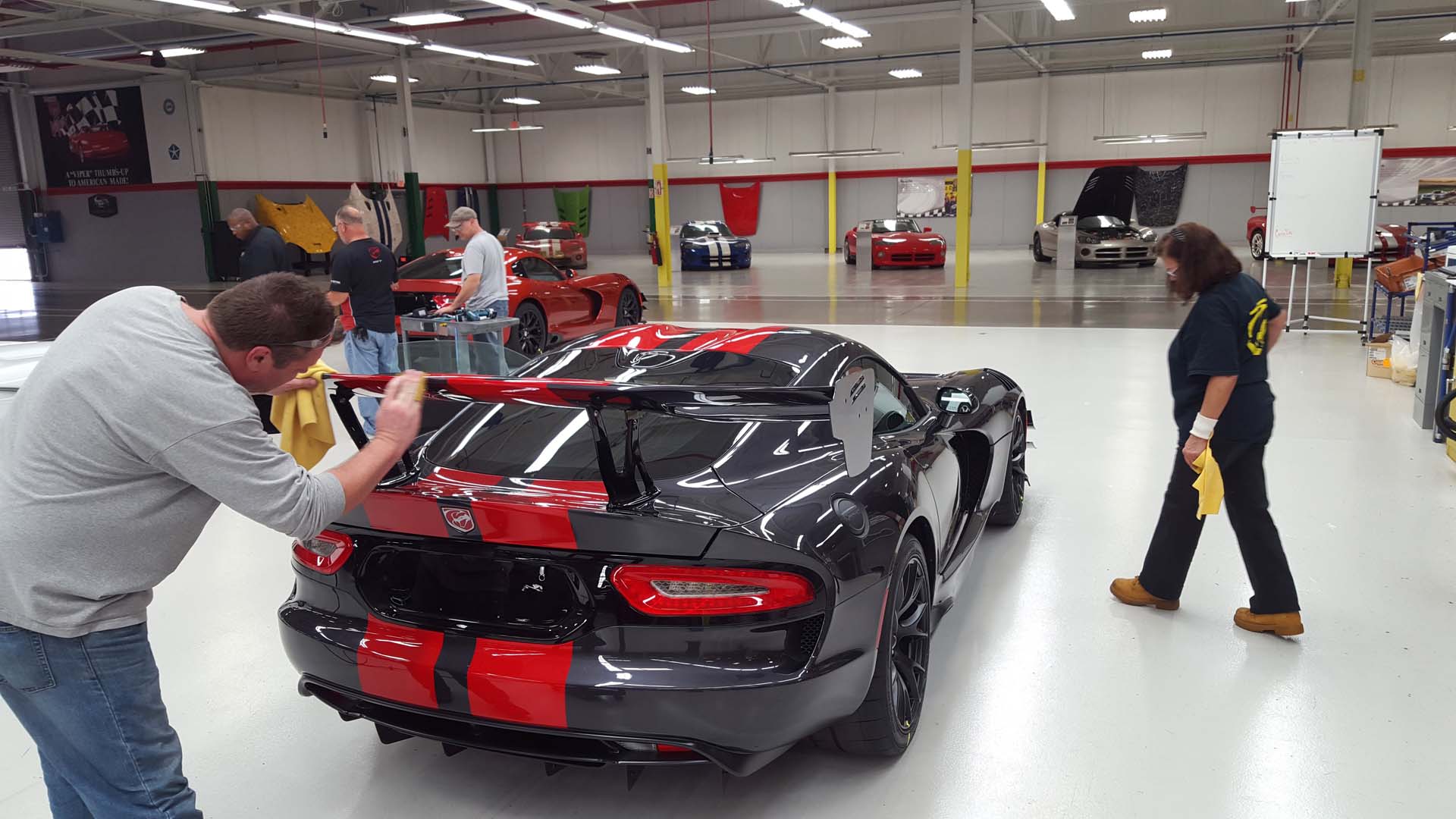
Every Viper is different, and they’re all flawless. In this photo, Steven Showalter and Bonnie Marth give a new Viper ACR a close-up inspection. This pair works at Prefix, the company who paints and preps all of the Viper’s body panels. They spend their day at Conner Avenue though, working under this flaw-revealing lighting and inspecting the paint and finish for any imperfections, no matter how small. In this photo, Showalter is making a final hand-buff of the rear spoiler, which he just finished re-buffing to remove some ‘orange peel’ in the paint.
A special room
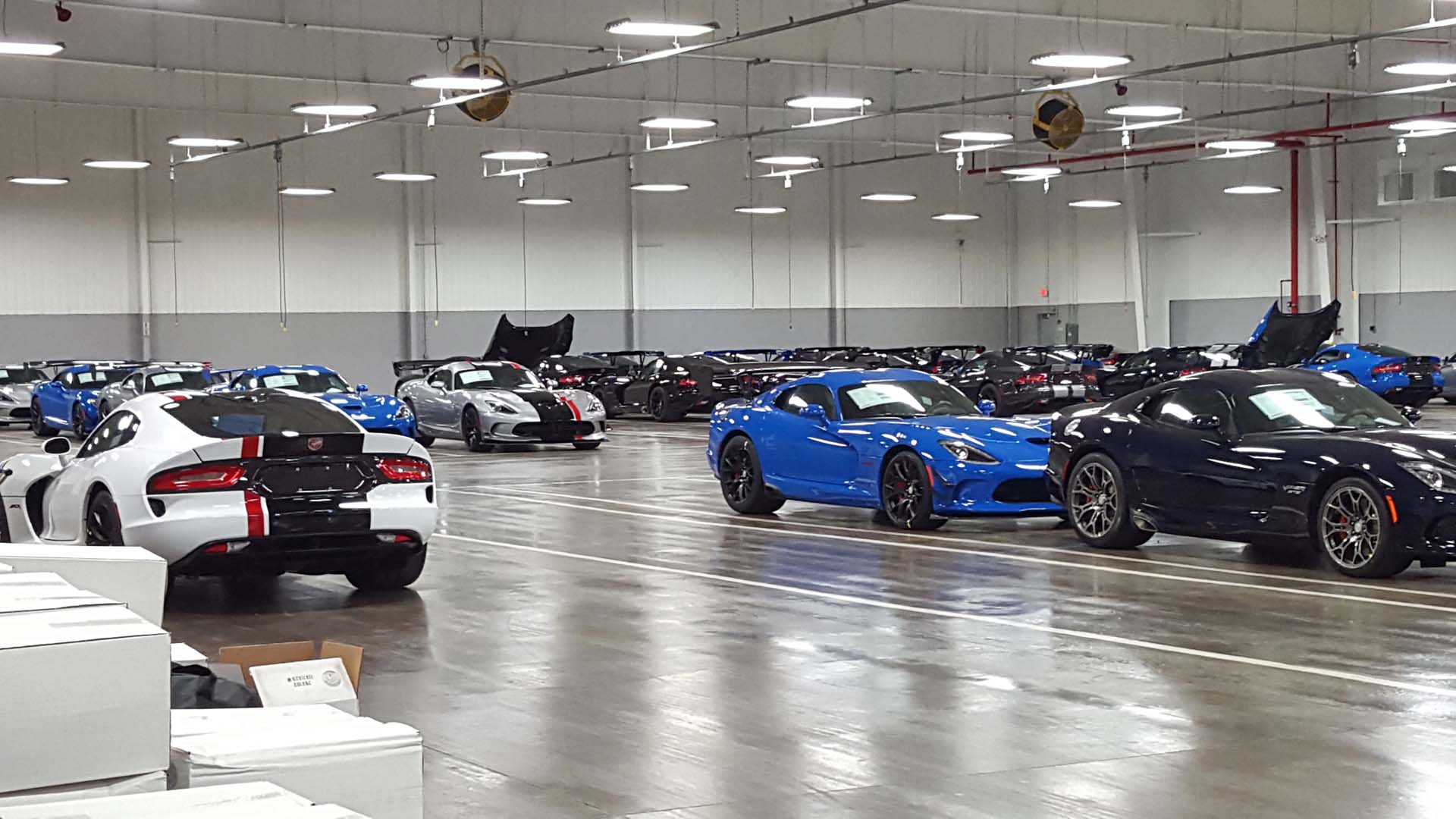
This room contains completed Dodge Vipers, which are ready to be sent to their happy owners around the globe. Each one is different, custom built, and exclusive. With a special custom-ordering process, Dodge won’t sell a Viper with the same colour scheme as yours for a full year after you order it, ensuring you’re driving a truly one-of-a-kind car. Special trucks pick the Vipers up from this climate-controlled storeroom when they’re ready for delivery. Owners can pick their new car up at the factory too, and meet its builders, if they like.

















